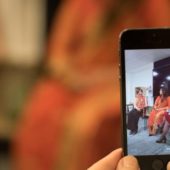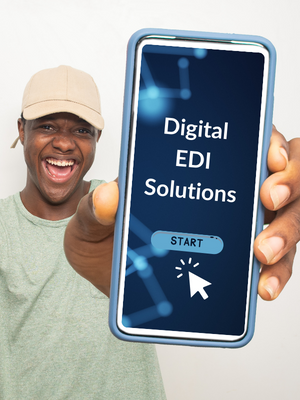 ‘Where are you based?’ I’m sometimes asked. Well, there is no ‘Voice HQ’, we’re a virtual business. This makes sense: we run our workshops and courses in other people’s businesses; mainly in the UK, but also in Ireland and the rest of Europe. However, thanks to modern technology our associates, coaches and other members of the Voice team are in constant contact with both me and each other. We also make sure we do meet face to face. We have one of our routine ‘awaydays’ next week to discuss strategy and objectives for the next quarter, and two weekends ago the team assembled for one of our regular social events.
‘Where are you based?’ I’m sometimes asked. Well, there is no ‘Voice HQ’, we’re a virtual business. This makes sense: we run our workshops and courses in other people’s businesses; mainly in the UK, but also in Ireland and the rest of Europe. However, thanks to modern technology our associates, coaches and other members of the Voice team are in constant contact with both me and each other. We also make sure we do meet face to face. We have one of our routine ‘awaydays’ next week to discuss strategy and objectives for the next quarter, and two weekends ago the team assembled for one of our regular social events.
So, members of the Voice team don’t ‘work from home’: they just work. I’d like to see that mindset spread to more traditionally organised businesses. It would help remove the stigma of flexible working – take it away from being associated with ‘the mummy track.’
In fact, one of the most common things we hear when this subject comes up in our work with clients is an appeal for flexible working to be applied consistently throughout an organisation and for managers to ensure it’s available for everyone, not just parents.
If you’re resisting it in your team, here are some more ideas that might help.
There are numerous benefits to promoting flexible working, not least the ability to recruit and retain the most talented employees, as well as a reduction in staff turnover with its associated cost benefits. It might require some creative thinking, but offering options such as job sharing, ‘shift swapper’ pools , flex time, and compressed work weeks can bring benefits through increased staff loyalty and motivation.
The single biggest factor though is technology, which has already made so much remote working possible. As it continues to evolve so will the ways in which businesses organise themselves. In the meantime, says Karin Mueller, Voice’s resident leadership coach, make technology your friend and use all the tools that are out there: project management programmes, online meeting platforms, collaboration channels to name a few.
Karin, who runs several virtual coaching programmes, says: ‘In addition to relying on technology, leaders need to work hard to make sure everyone still feels engaged and connected, and to foster a culture of trust. We are all human and at the end of the day it’s relationships that make the world go round.’
This culture of trust extends to individual line managers trusting their subordinates and not mentally substituting ‘working from home’ with ‘a day off.’ A very senior manager of my acquaintance was extremely resistant to, as he saw it, ‘setting a precedent’ of flexible working within his teams. The many hours he spent away from the office was ‘work travel,’ but requests to work from home were not the same. It took one of his most valued young female bankers to threaten to resign before he gave in. Perhaps a mindset of ‘when in doubt, try it out’ might have worked better for him, and given him less ground to make up in winning back the confidence of one of his best and brightest team members.
And here’s a head up: expect a huge buzz around this whole topic when the Government’s Flexible Working Taskforce reports next year. For have no doubt, the future is flexible.






 A friend of mine, recently back from a holiday in Yorkshire, commented on how the break had been extra enjoyable because of the friendliness of the locals. I was surprised: ‘Ooh aren’t they all a bit dour up there?’ I said. And then I thought of all the people from Yorkshire I knew or had ever known: warm and friendly every single one. Yet, despite this real life evidence, my ingrained viewpoint had persisted. My next thought was relief that this classic unconscious bias had never caused me to treat anybody from that particular part of the North-East differently from anyone else. But then I had to call myself out again, as I wasn’t even aware I had this prejudice, how can I be sure it hasn’t affected my actions?
A friend of mine, recently back from a holiday in Yorkshire, commented on how the break had been extra enjoyable because of the friendliness of the locals. I was surprised: ‘Ooh aren’t they all a bit dour up there?’ I said. And then I thought of all the people from Yorkshire I knew or had ever known: warm and friendly every single one. Yet, despite this real life evidence, my ingrained viewpoint had persisted. My next thought was relief that this classic unconscious bias had never caused me to treat anybody from that particular part of the North-East differently from anyone else. But then I had to call myself out again, as I wasn’t even aware I had this prejudice, how can I be sure it hasn’t affected my actions?
 Conventional wisdom would have it that introducing new technologies into a working environment enriched by up to 5 generations, with all the attendant stresses and strains, is bound to add an extra layer of mis-understanding and tension to even the most laid-back office.
Conventional wisdom would have it that introducing new technologies into a working environment enriched by up to 5 generations, with all the attendant stresses and strains, is bound to add an extra layer of mis-understanding and tension to even the most laid-back office.





